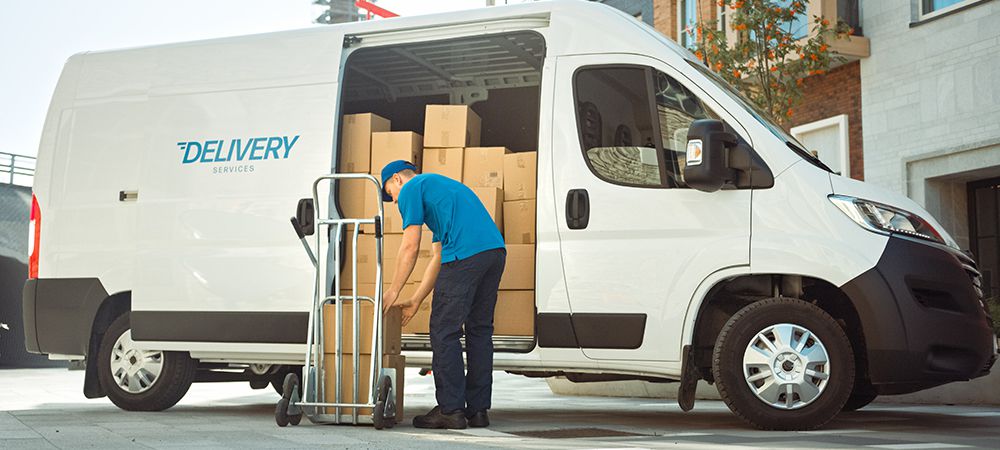Cross-docking is an effective way to improve efficiency in shipping and handling times. When properly organized, this strategy can give your company a competitive advantage as it will streamline important sections of your supply chain. Companies dealing with perishable goods and a high volume of turnover find this lean supply chain method especially advantageous. Here we will look at exactly what cross-docking is and the advantages it provides.
What is Cross-Docking?
Cross-docking is a way of creating a leaner, more efficient supply chain by completely or mostly removing the need for warehousing. In traditional shipping, items may be warehoused by a distributor for a significant time as they wait for a buyer before being shipped. While this process is simple and straightforward it does mean paying for warehousing space, additional handling hours, and other costs.
Cross-docking employs advanced logistics and technology to eliminate the need for storage. Instead of items languishing in a warehouse waiting for customers, items are taken from an inbound shipment from the supplier, sorted, and reloaded onto an outbound shipment headed to customers with little to no storage in between.
Two Types of Cross-Docking
Cross-docking can either occur before items are distributed or after. When items are cross-docked before distribution, this means customers have already purchased the items before the supplier has even sent them out. In this type of cross-docking, the supplier or manufacturer loads the shipment which is then taken to the cross-docking facility where it is immediately loaded onto trucks to be distributed to customers.
When items are cross-docked after distribution, this means the items are sent by the supplier or manufacturer to the cross-docking station to await instructions on where they are to be distributed. Though this may require more time at the cross-docking center, it will still be far shorter than a warehouse stay. To determine how and where to distribute the items, sales trends and inventory of retail locations are taken into account. Areas where items are running low or selling quickly, will be able to receive a shipment just in time.
What Does a Cross-Docking Facility Do? In this system, a shipment is sent to a cross-docking facility instead of a warehouse. This facility acts as a place to sort and distribute freight into inbound and outbound shipments. It differs from a warehouse because it is much more compact and is designed to efficiently move items, not store them for long periods. Typically, a shipment will not stay at the cross-docking facility for more than 24 hours.
Advantages of Cross-Docking
Faster Fulfillment to Customers: When using post-distribution cross-docking, your customers get the advantage of faster shipping times. With items already at the cross-docking station and sales trends being watched, shipping and delivery can be done in a fraction of the time.
Competitive Advantage: Money and time savings can be passed onto the customer to give your company and products a competitive advantage.
Labor Cost Savings: With items moving through the supply chain more quickly, there is reduced labor hours required for handling.
Reduced Damage Risk: While precautions are taken at every step of the supply chain, increased handling and storage times means increased risk for damage or loss of product. With cross-docking this risk is reduced as products are handled less and moved along more quickly. This can be especially beneficial for perishable and fragile goods.
Easier Inventory Tracking: With cross-docking, you get the additional advantage of being able to track a larger shipment versus individual items or smaller lots. Inventory management, overall, becomes better and more efficient as shipments become available just-in-time versus being stored.
Combined Distribution and Sorting: Another area that cross-docking makes efficient is that sorting and distribution are both done from the cross-docking facility. Multiple carriers can be assigned from a single cross-docking station to make the final delivery to multiple customers.
Risks of Cross-Docking
When you partner with the right team and employ the correct logistics, cross-docking can be extremely beneficial, efficient, and a cost savings. However, upfront costs of automation, new or updated technology, logistics, and maintaining a transport fleet should be considered. While these upfront costs are typically made back in short order, they can be prohibitively expensive for companies that do not have the cash available. Similarly, companies without a well-established and reliable customer base may not be able to justify this upfront cost.
Who Should Use Cross-Docking?
Cross-docking is a time and cost saving method for many industries, however; some types of businesses and products can benefit more than others. Companies that have one or more of the following elements to their business, should consider this type of distribution.
Consistent Customer Base
While this is not an absolute requirement, a customer base with a consistent demand for your product makes cross-docking much more beneficial. Suppliers with a customer base that does not order on a regular basis, may find it difficult to batch orders the way cross-docking requires.
Suppliers of Perishable Goods
Moving items through the supply chain faster means they can get to the end consumer more quickly and without damage. This is especially beneficial to items with a short shelf life like meat and produce. It can even be good for items like batteries which have a longer shelf life than fruits or vegetables but it is still advantageous to offer the freshest products to retailers whenever possible.
Smaller Suppliers
While cross-docking is used by suppliers of all sizes, smaller suppliers can especially benefit from the competitive advantage it offers. This method of distribution allows a company to save time and money without lowering the quality of goods or reducing any other benefits to the customer.
Cross-Docking Methods
Continuous: There are several methods or styles of cross-docking that are commonly used. One of the most common is “continuous cross-docking.” As the name implies, the loading and unloading of shipments is done continuously with little time in between.
Consolidation: This method is most similar to traditional warehousing because items do need to be stored temporarily while smaller shipments arrive separately before being consolidated together. Consolidation is a good method for reducing the costs associated with delivering to many customers. Use this method when you have multiple suppliers feeding into the same distribution center.
De-Consolidation: For very large shipments, however; de-consolidation can be a better method. If you have many individual customers, de-consolidation allows for faster delivery to multiple locations versus a single truck making multiple stops with a large shipment.
Get Started with Cross-Docking
One of the most important aspects of successful cross-docking is to partner with a transportation and logistics company that understands what is required. At Ontario Container Transport we offer a full range of cross-docking services including intermodal containers, distribution facilities, and a robust network of carriers.
We also offer palletizing services and long term warehousing solutions to get your items ready to ship when they are needed and keep them safe until they are. To receive a free quote on any of our services, contact Ontario Transport Containers today.


